Sowing seeds for leafy vegetables and grow tunnel (Best polytunnel):How to create a vegetable garden
How to set up a vegetable garden from scratch. Last time, we covered the basics of creating a veggie garden, including preparing the soil and setting up rows. This time, we’ll sow seeds in the created garden. Since it’s winter now, we will use winter gardening materials such as non-woven fabric and grow tunnel (garden polytunnel for vegetables).
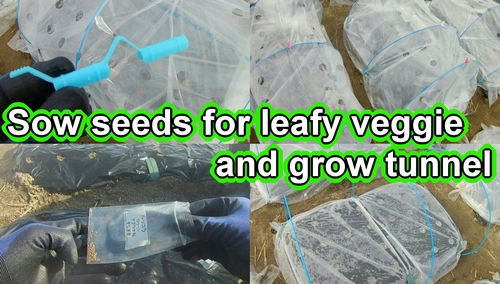
Sowing includes spinach, baby leaf greens, baby bok choy, komatsuna, and sugar snap peas.
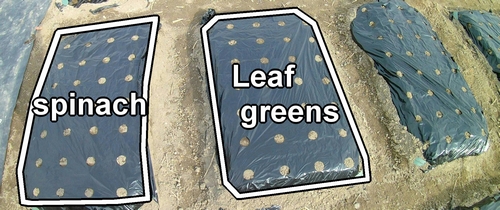
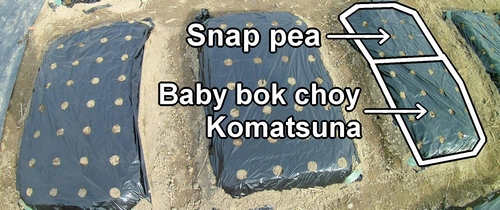
The challenge of winter vegetable cultivation is the limited variety of vegetables that can be grown. In winter, the growth of vegetables is quite slow, so there are not many options other than leafy vegetables like spinach and komatsuna. If it’s around autumn before it gets really cold, you can also grow daikon radishes, napa cabbage, and cabbage.
Sowing seeds for leafy vegetables (How to make a vegetable patch:Part 1)
Lightly press with your fingers on the spots where there are holes in the mulch to create indentations in the soil.
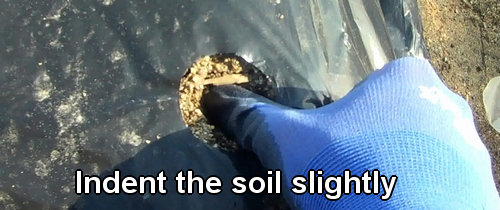
Sow 3-4 seeds in one hole, making sure the seeds do not overlap as much as possible.
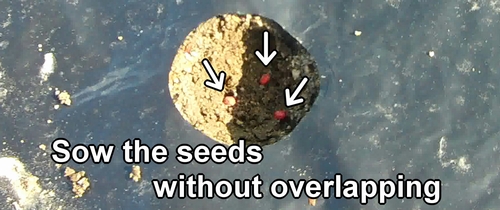
For sugar snap peas, we need spacing between plants, so cut the mulch with a mulch cutter and sow seeds in four spots.
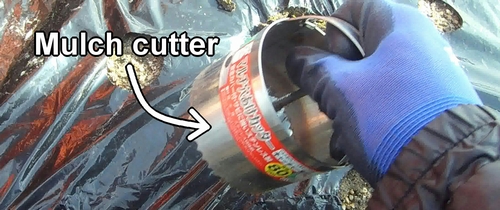
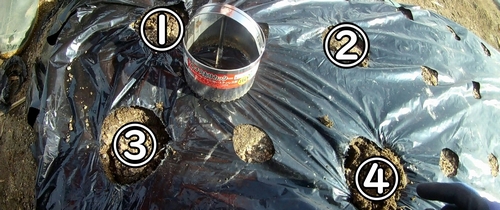
After sowing the seeds, lightly sprinkle vermiculite powder on top. (Avoid applying too much, as it can make germination difficult. Just cover the seeds lightly.)
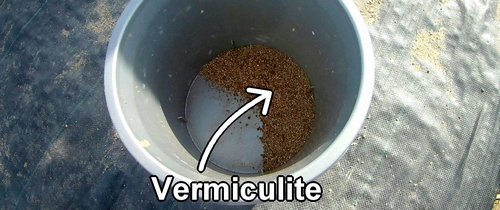
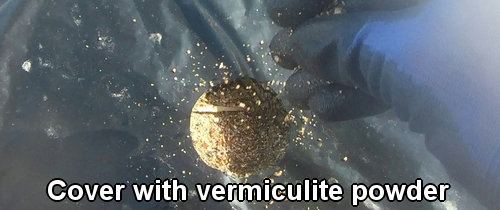
Some people use crushed rice hulls instead of vermiculite.
Cover the vegetable beds with non-woven fabric (How to make a veggie garden:Part 2)
In winter, cover the vegetable beds where seeding is done with non-woven fabric. The main purpose is to retain warmth. Covering with non-woven fabric helps retain soil temperature, promoting seed germination. Additionally, it serves the purpose of protecting the seeds from the dry winter air.
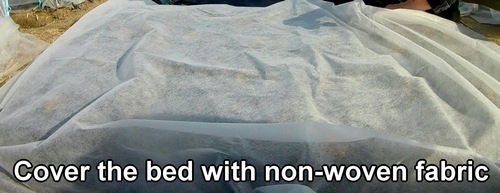
Place the non-woven fabric loosely. If you put it on tightly, it may hinder the upward growth of the sprouts.
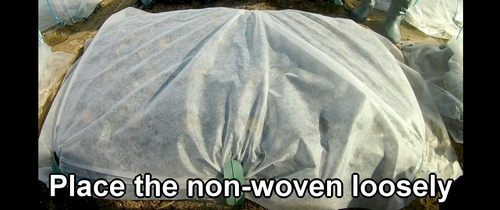
Secure the placed non-woven fabric with mulch pins.
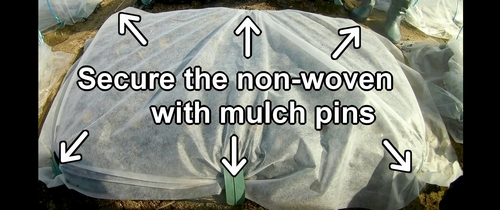
Afterward, use a watering can to generously water over the non-woven fabric.
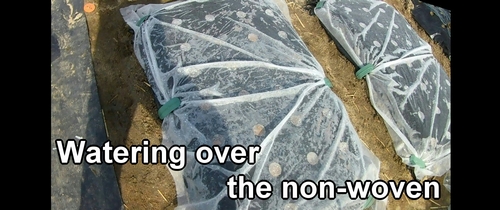
Grow vegetable polytunnel (How to build a veggie garden:Part 3)
Setting up gardening plastic on the vegetable beds. This, like the non-woven fabric, is also for insulation. Place it over the beds in a tunnel shape and perform “raised bed polytunnel". Garden plastic, used in combination with non-woven fabric, further enhances insulation.
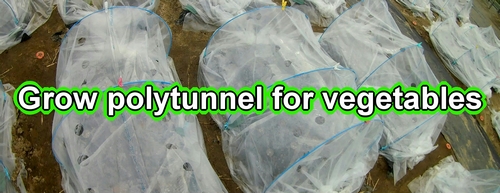
First, insert flexible garden poles into the soil. This is an FRP (Fiber Reinforced Plastic) pole.
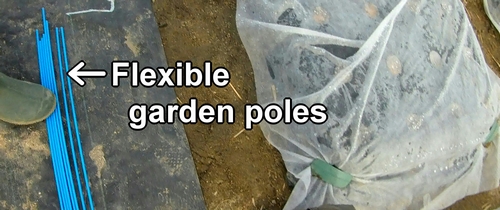
Set up 3 poles at equal intervals.
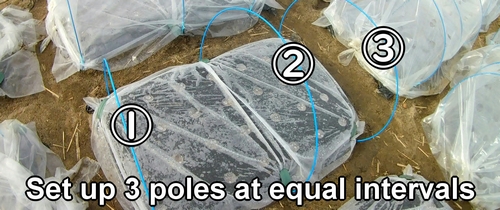
Insert the poles diagonally toward the inside of the bed.
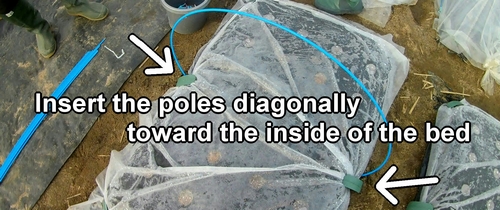
Fold the insulation film in half and tie the creased part.
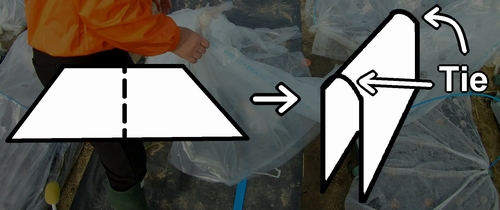
U-shaped garden pin is hooked onto the knot. (Be careful not to poke the plastic with the pins.)
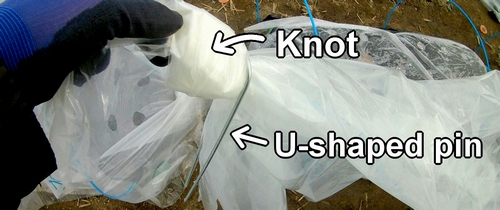
Then, place the thermal plastic over the poles. (Make sure the center of the plastic aligns with the center of the bed.)
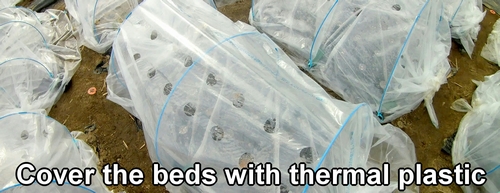
Insert U-shaped garden pin into the soil after covering it with plastic.
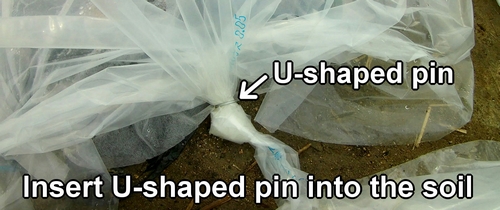
Secure the insulation film with clothespins.
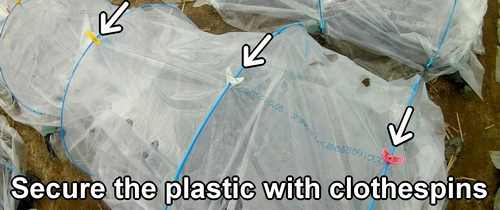
The grow tunnel on the side of the flexible poles is secured with a tunnel clips. The tunnel clips are fitted onto the flexible poles, sandwiching the plastic in between.
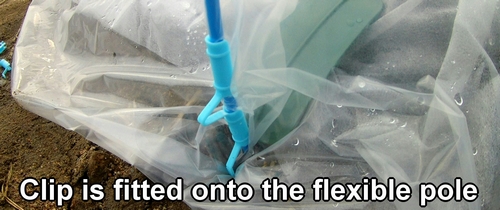
Tie and gather any excess of the insulation film.
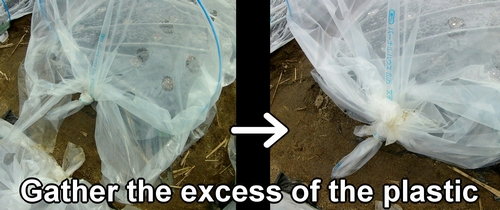
Gather the excess plastic on the sides of the grow tunnel.
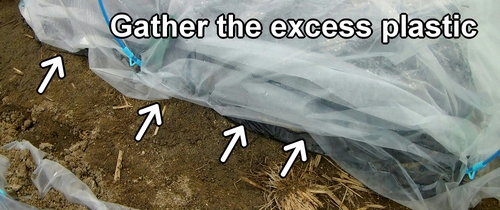
This completes three grow tunnels. The key to a winter vegetable garden is insulation. For vegetables grown from seeds, if you don’t keep them warm with grow tunnel (raised bed polytunnel), the germination rate may decrease. Let’s cleverly use non-woven fabric and garden plastic film to ensure the soil temperature.
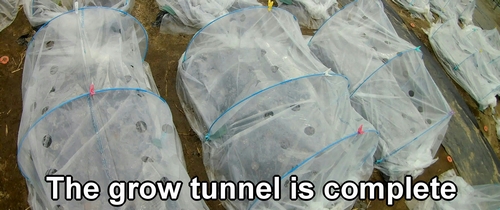
Following is the video for how-to. English subtitles are available.
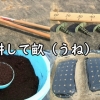
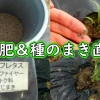

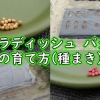
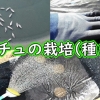
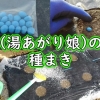
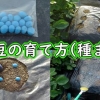


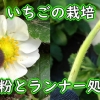

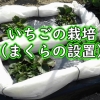
ディスカッション
コメント一覧
まだ、コメントがありません